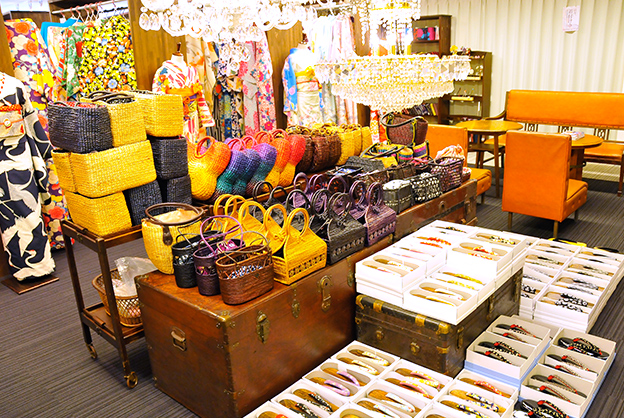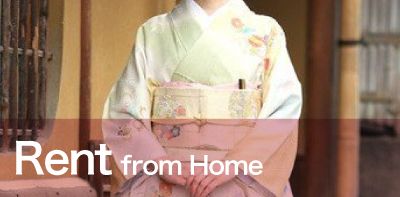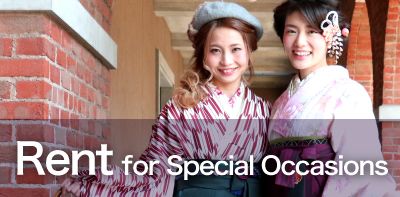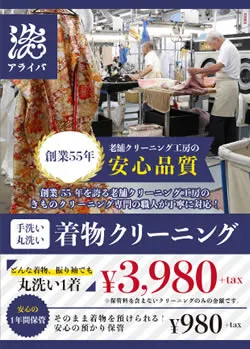Kimono besides having a high history and value and prestige, also has many amazing (or surprising) sides as well. Such as accessories, for example, other side items needed when wearing a kimono. To become a beautiful and neat kimono coordination, it is necessary to have at least the following items.
Well, please check below ^ o ^
Obi

Obi (帯 – おび)
that is, the belts are the most striking and always a point in the complete coordination of the kimono. The material is quite rigid and there are various ways to tie it. Some of the most popular obis are Nagoya Obi 名古屋 帯, Hanhaba Obi 半幅 帯, and Fukuro Obi 袋 帯.
- Nagoya obi has features: it is easy to tie / tighten, so it is often used in daily activities. Although it is rarely used in formal places / events, it has beautiful motifs and colors. This Nagoya obi is also easy to be paired so that various models can be made to change the style of the kimono used.
- Hanhaba obi, as the name implies only has half the width of an ordinary obi. Usually used when wearing haori (a typical Japanese coat) so it’s not too visible and easy to wear. Because of its practicality, this obi is often combined with casual clothes in casual style and is perfect for beginners.
- Fukuro obi is commonly called a formal obi. Although it is difficult to be subjected to it being an advantage that is indeed elegant and can produce beautiful obi. This Obi is often used for important events with top level kimono such as houmongi, tomesode, etc. With a normal length of around 4m, any kimono can look more prestigious and beautiful with various ways to tie it.
Nagajuban, hadagi, koshihimo

- Nagajuban and hadagi (長襦袢、肌着)
these two items are the inner / inner used when wearing a kimono. This also distinguishes kimono and yukata that can be used directly on the skin. - Koshi-himo (腰紐 – こしひも)
literally “waist belt” is a rope from a thin cloth used to tie the kimono before it is closed / trimmed by obi
Date jime, Obi ita, Obi jime, Obi dome, Obi age


- Date-Jime (伊達締め – だてじめ)
another thin cloth tied above koshihimo, serves to protect the fabric / kimono - Obi-ita (帯板 – おびいた)
The shape is like a hard slab placed behind the obi, so that the shape and surface of the obi are neat and sturdy - Obi-jime (帯締め – おびじめ)
Decorative straps that have a variety of shapes, tied over the obi as accents and keep the obiage from changing - Obi-dome (帯留め – おびどめ)
Ornaments / accessories in the middle of obijime, there are many shapes and sizes, function as a complement and sweeten the appearance - Obi-age (帯揚げ – おびあげ)
fabric that can be combined and tied with various shapes such as ribbons etc. Often seen appearing between the kimono and the obi
Others Accessories

- Zouri (草履 – ぞうり)
Traditional Japanese sandals combined with tabi (two-pronged socks) when wearing a kimono. Made from various materials such as straw, wood, etc. - Kinchaku fukuro (巾着袋 – きんちゃくふくろ)
Bags that are more like small wallets / pouches, are simple in shape with draw-string straps and usually Japanese motifs - Bangasa (番傘 – ばんがさ)
Japanese-style umbrellas that have many ribs and are very strong. There are also those made of paper or just as decoration - Kanzashi (簪 – かんざし)
Japanese-style hair ornaments that have distinctive shapes, ways of using and their own meaning. There are various types such as circuits, tombodama, tsumamizaiku flowers, etc.
Now that’s what the “small” accessories complementing the kimono are! Of course, there are still so many details that differs to each Japanese artisan when wearing their traditional clothes.
Information on this article was obtained on the original Japanese-language website. for those who want to look around the other kimono, you can check the following link ^^
Facebook Page Kimono Rental Wargo
instagram : @kyotokimonorental.wargo





